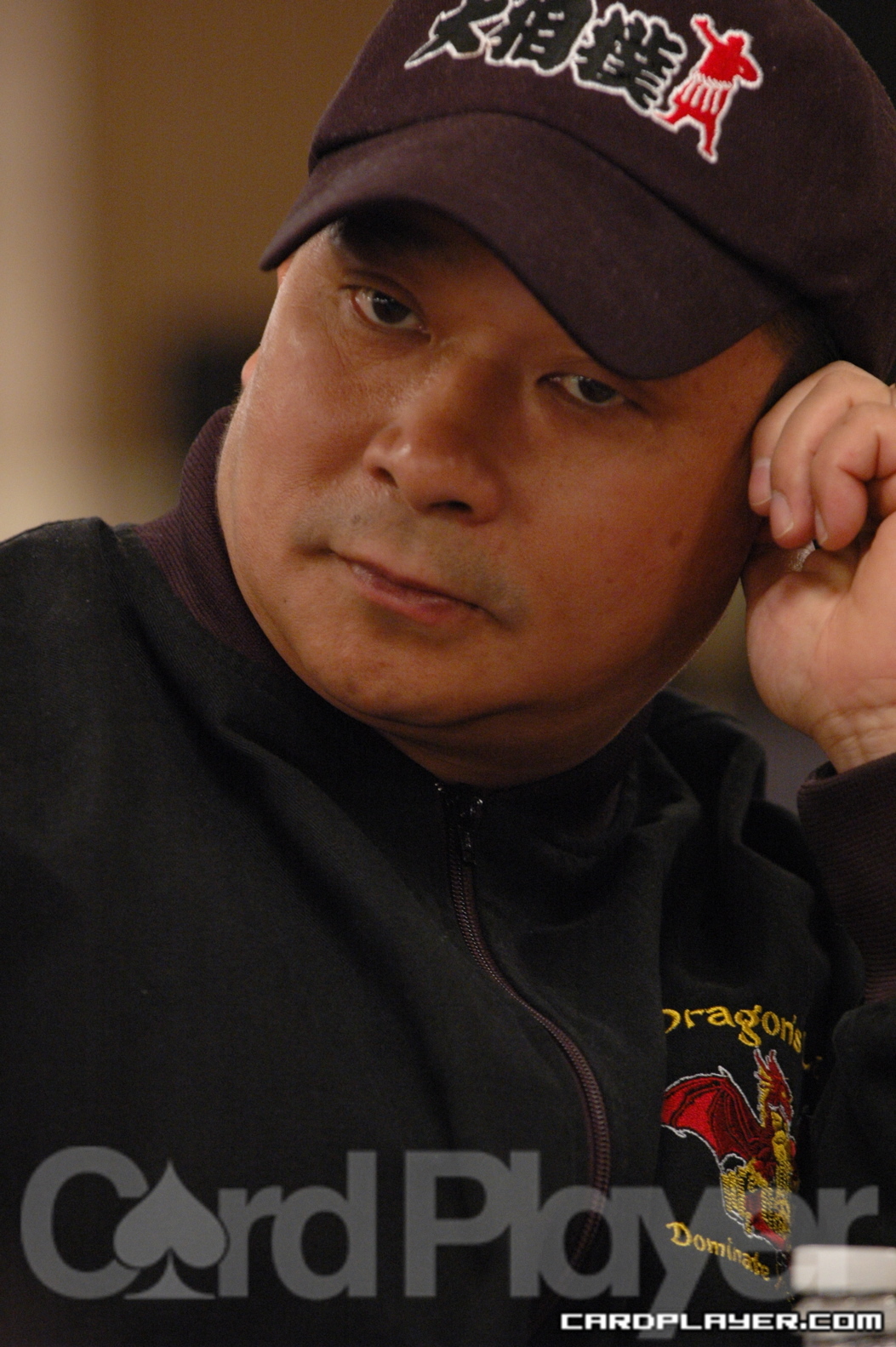






WSOP: History -- 1987 RecapJohnny Chan Becomes the First Foreign-Born Player to Win the World Championship |
|
|
The year 1987 marked an unofficial changing of the guard for the World Series of Poker. At 152 players, it was no longer just a Texas road gamblers reunion anymore (although T.J. Cloutier did win the preliminary $1,000 Omaha event), and new poker stars from across the country were beginning to emerge. Chief among these groups of players were the burgeoning individuals from the Mayfair Club in New York City. Three players in the top 11 (Jay Heimowitz finished in 11th place) that year were from the club, and two of them were seated at the final table, Dan Harrington and Howard Lederer, who both had made it in their first attempt. Also seated at the final table were Jack Keller, Mickey Appleman, Eldon Elias, James Spain, Bob Ciaffone, Frank Henderson, and Johnny Chan, who was the chip leader with 461,000.
Although Chan had lived in Texas, he was anything but a classic Texas road gambler who had faded the white line. Chan was a Chinese immigrant who paid for his poker lessons at the Golden Nugget and other Vegas casinos. He had paid his dues and eventually became a world-class player. His first success at the WSOP came in 1985, when he won the $1,000 limit hold’em event, and starting in ’87 he began to build his poker legend.
The final nine were whittled down to a final six (Keller – ninth, Appleman – eighth, Elias – seventh) at the final table, and then the ESPN cameras started rolling to catch the action. They were the first television network to film the WSOP in years, although they only agreed to film the final six to keep production costs low (this is the same number of players that are filmed at World Poker Tour final tables today).
Harrington was the first to make an exit from the final half dozen. He had Spain dominated with A-Q to A-6, but Spain spiked a 6 on the flop and then another on the river to end Harrington’s run. Lederer followed him back to New York quickly after that when A-6 was unkind to him as well. He was all in with those two cards against Ciaffone, who held pocket nines. A 9 fell on the flop, and the river for Ciaffone, and the second member in a row from the Mayfair Club had been eliminated in deja-vu-like fashion.

 5
5 and Chan held A
and Chan held A J
J . Chan was ahead, but a 5 on the turn gave Ciaffone the lead with two pair. Chan was delivered the lead back when an ace was dealt on the river to give him a better two pair and the pot. Ciaffone was eliminated and Chan was next-to-unstoppable coming into the heads-up match. “It was clear that whoever won that pot was going to become the overwhelming favorite to be the next world champion,” said Eric Drache.
. Chan was ahead, but a 5 on the turn gave Ciaffone the lead with two pair. Chan was delivered the lead back when an ace was dealt on the river to give him a better two pair and the pot. Ciaffone was eliminated and Chan was next-to-unstoppable coming into the heads-up match. “It was clear that whoever won that pot was going to become the overwhelming favorite to be the next world champion,” said Eric Drache.
Chan began the heads-up match with 1.2 million, while Henderson held only 300,000, and Drache proved to be correct just a few minutes later. Chan raised 60,000 preflop and Henderson moved all in for 240,000. Chan called and flipped up A 9
9 . Henderson held pocket fours and the board was dealt K
. Henderson held pocket fours and the board was dealt K 8
8 5
5 10
10 9
9 . Chan was the first foreign-born player to win the WSOP main event, making it a true “world” championship.
. Chan was the first foreign-born player to win the WSOP main event, making it a true “world” championship.
WSOP history article links:
Preludes - 1970 - 1971 - 1972 - 1973 - 1974 - 1975 - 1976 - 1977 - 1978 - 1979 - 1980 - 1981 - 1982 - 1983 - 1984 - 1985 - 1986
Quote source: “All-In the (Almost) Entirely True Story of the World Series of Poker,” by Jonathan Grotenstein and Storms Reback
